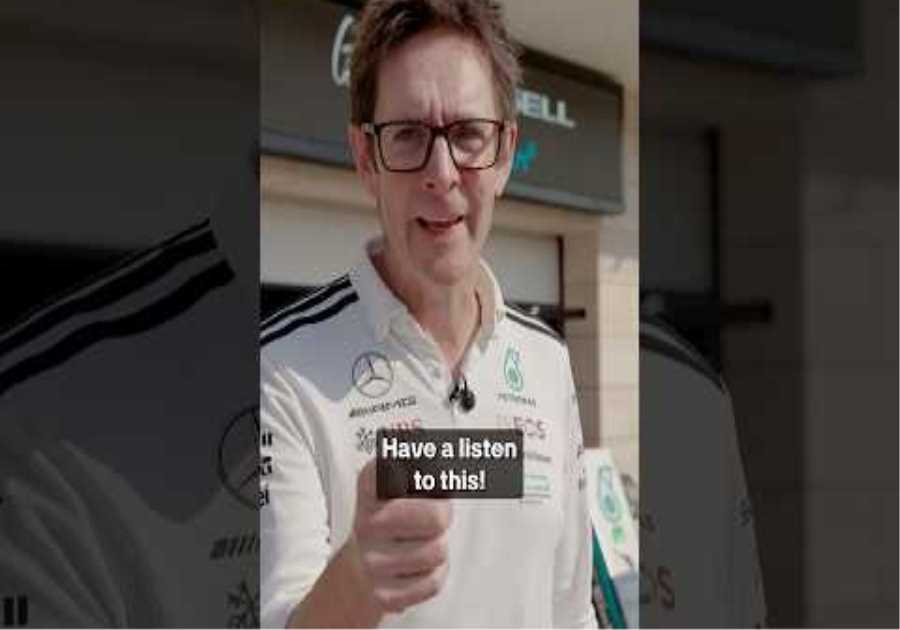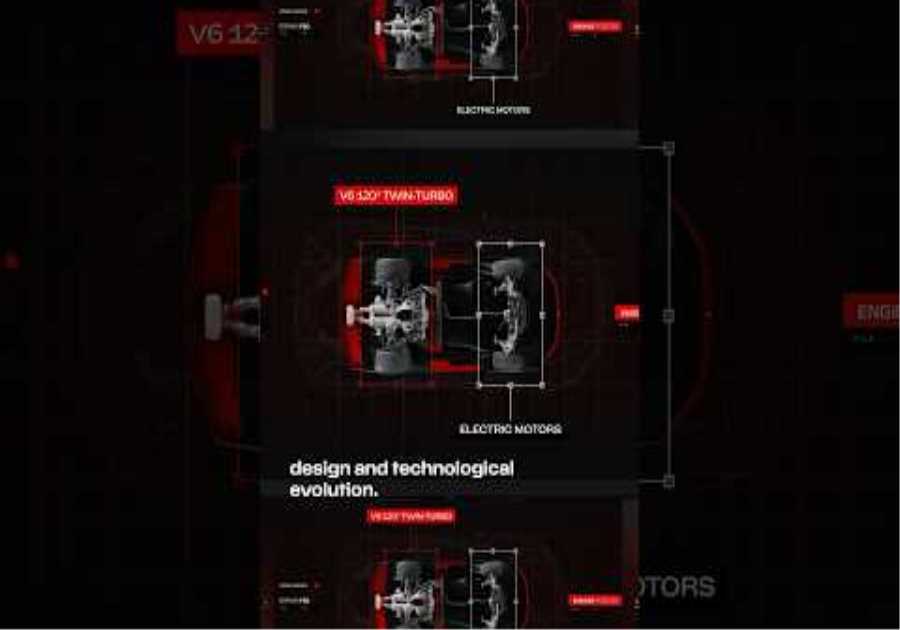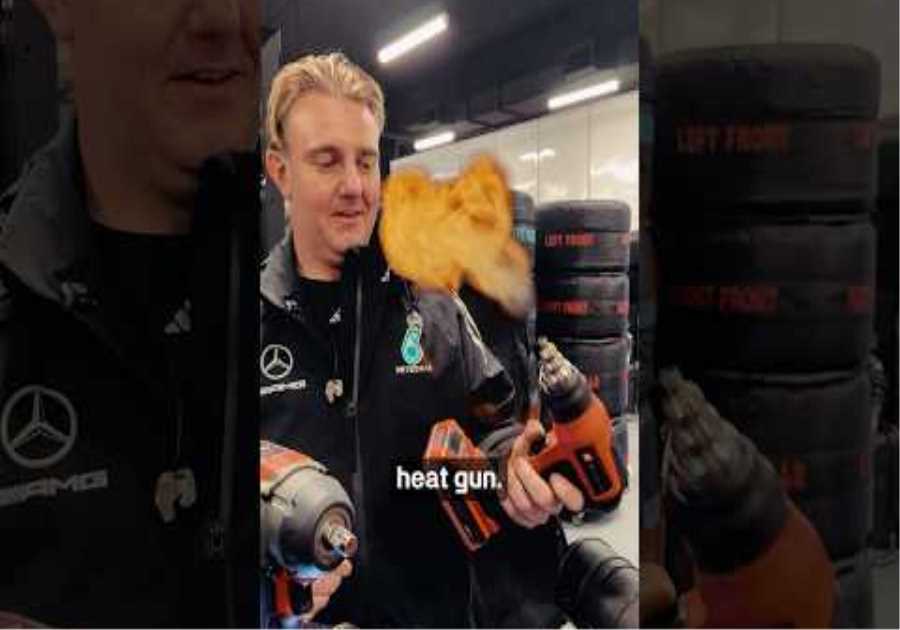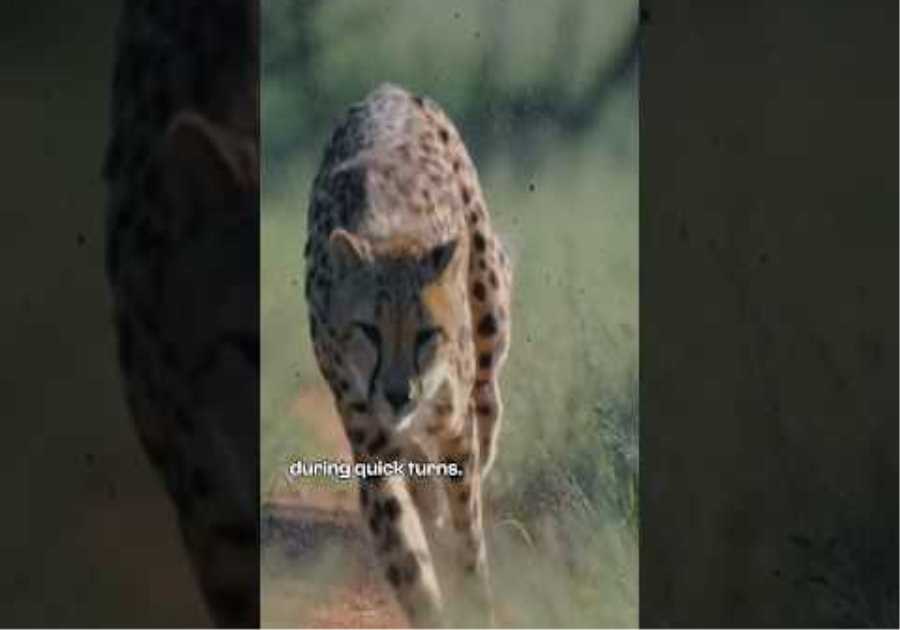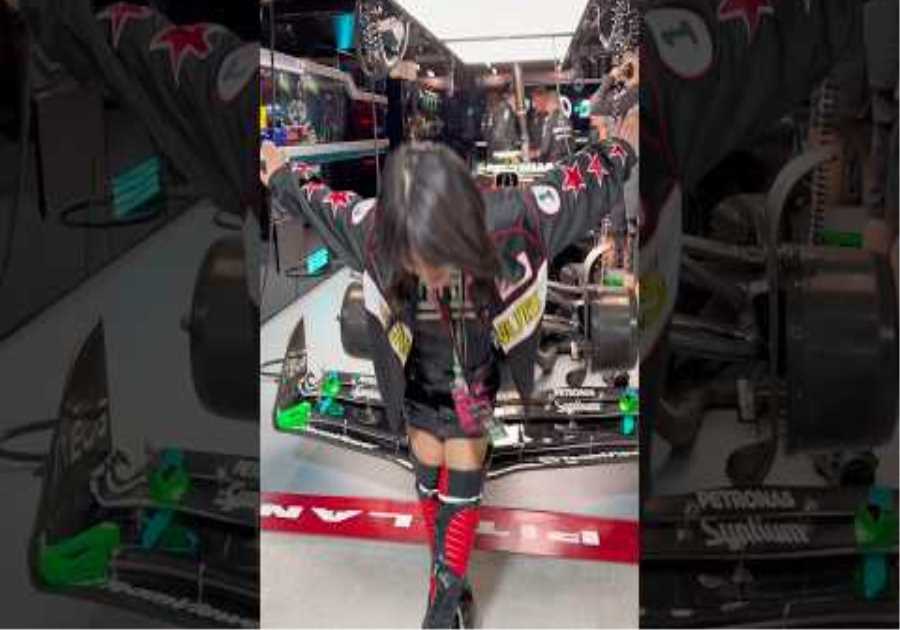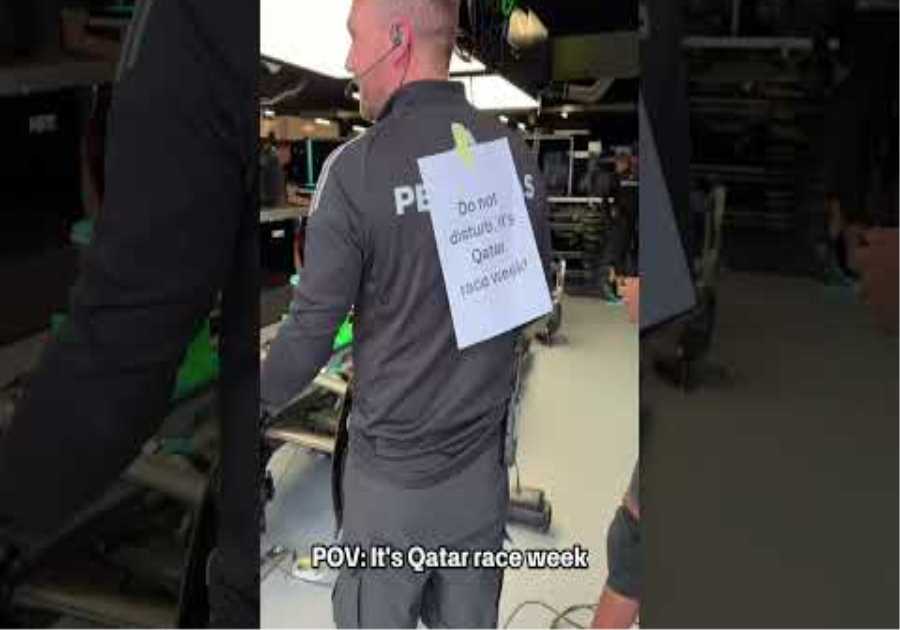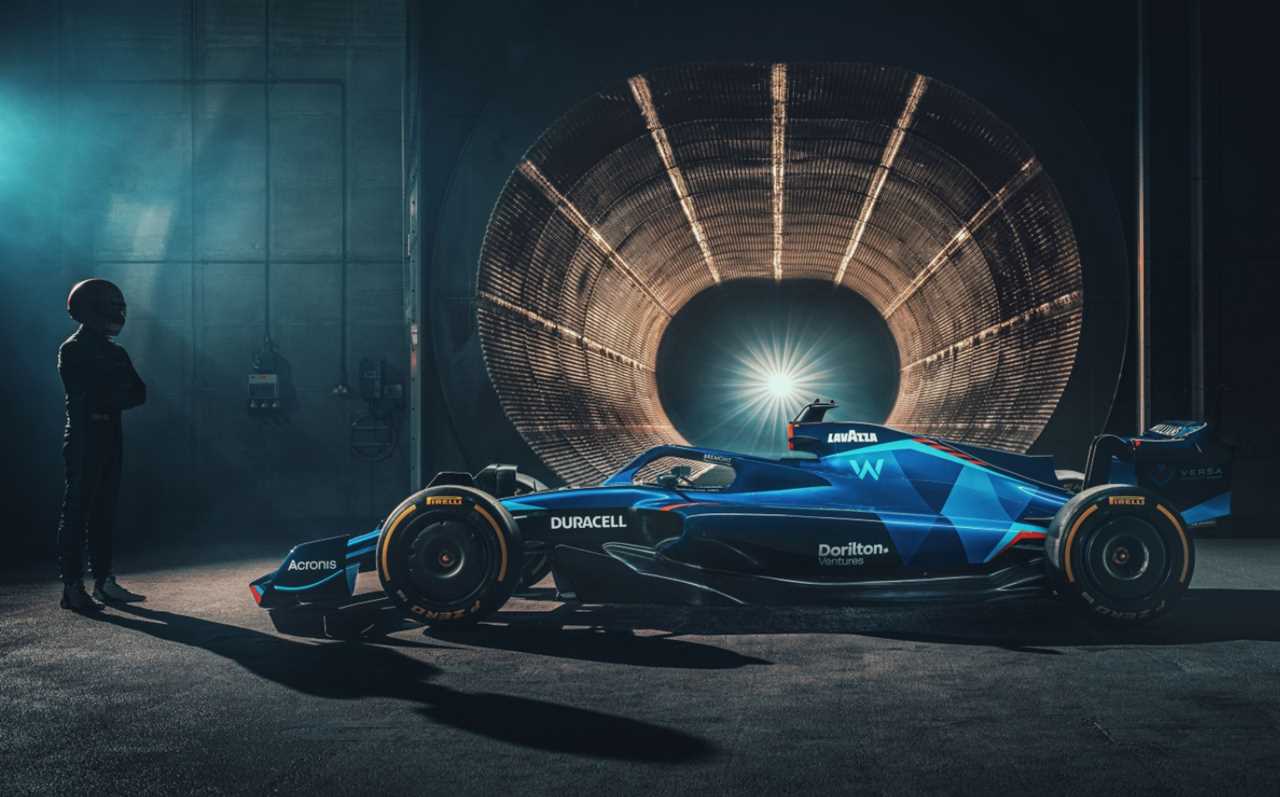
The 2022 Formula 1 season is now well underway and, following the Saudi Arabia GP last weekend, attention turns to the next race on the calendar: the Australian GP in Mebourne, on April 10
After last year’s rollercoaster championship, which saw Red Bull’s Max Verstappen clinching the drivers’ title in controversial style in the dying moments of the final race (something revisited in thrilling detail on Netflix’s F1: Drive to Survive), it’s all change for 2022 with an all-new car.
Pre-season testing didn’t suggest dominance for either of 2021’s top teams but after the first two races we have a good idea of who’s likely to be challenging for the title this year: Red Bull is showing speed and Max Verstappen managed to win in Saudi Arabia, but reliability is a question mark after two retirements the week before.
Ferrari kooks to have the edge with an impressive one-two at Sakhir and another doubkle podium the weekend after.
Mercedes, meanwhile, are salvaging the best results they can given their package is clearly not up to par, though the silver cars appear to be the best of the rest. Just.
The politics of the season is proving fascinating to watch. For example, how will a talented and hungry young driver such as George Russell fare now that he’s moved to Mercedes and racing alongside Hamilton, a driver who many regard as the greatest of all time?
How will Valtteri Bottas, dumped by Mercedes at the end of 2021, fare in his new role as lead driver at Alfa Romeo?
And Will Haas continue to shock us with impressive pace? Kevin Magnussen was drafted in at the 11th hour before the first race and managed to score a sensational fifth place in Bahrain, then picked up more points in Saudi.
More pertinently, will the minnow team be able to keep developing the car and fund its operation after dumping principal sponsor Uralkali, a Russian company? (More below)
Sections:
F1 2022 calendar
Though dates and locations is subject to change, the 2022 F1 season began as planned on March 20 in Bahrain and is set to finish on November 20 in Abu Dhabi.
The 2022 season sees the inclusion of one new track — Miami — scheduled for May 8, marking the first time since the US Grand Prix at Sebring in 1959 that F1 has gone to Florida. Other US GP venues over the years have been Detroit, Watkins Glen, Dallas, Austin, Phoenix, Las Vegas and Long Beach.
China is not on the calendar this year due to coronavirus restrictions, thiough it will be restored once the situation allows, according to the organisers.
We’ve also seen the Russian Grand Prix scrapped due to the host country’s invasion of Ukraine.
First pre-season testing for the 2022 F1 season took place on February 23-25 at the Circuit de Barcelona-Catalunya, and was followed by another at Bahrain on March 10-12.
For now, the 2022 F1 season looks like this:
| Date | Grand Prix | Venue |
|---|---|---|
| March 20 | Bahrain (read race report) | Sakhir |
| March 27 | Saudi Arabia (read race report) | Jeddah |
| April 10 | Australia | Melbourne |
| April 24 | Emilia Romagna* | Imola |
| May 8 | Miami | Miami |
| May 22 | Spain | Barcelona |
| May 29 | Monaco | Monaco |
| June 12 | Azerbaijan | Baku |
| June 19 | Canada | Montreal |
| July 3 | United Kingdom | Silverstone |
| July 10 | Austria* | Spielberg |
| July 24 | France | Le Castellet |
| July 31 | Hungary | Budapest |
| August 28 | Belgium | Spa |
| September 4 | Netherlands | Zandvoort |
| September 11 | Italy | Monza |
| September 25 | Russia (CANCELLED) | Sochi |
| October 2 | Singapore | Singapore |
| October 9 | Japan | Suzuka |
| October 23 | USA | Austin |
| October 30 | Mexico | Mexico City |
| November 13 | Brazil* | Sao Paulo |
| November 20 | Abu Dhabi | Abu Dhabi |
*Sprint Races to be included
Australian GP 2022 schedule and UK race start time
The lights go out to start the 2022 Australian GP at 6am UK time on Sunday, April 10, so as usual it’s an early start for us Brits.
There is no Sprint Qualifying race at the Albert Park circuit in Melbourne, so the regular three-part Qualifying session is from 7-8pm on Saturday, April 9, with the three practice sessions on Friday, April 8 (4-5am and 7-8am UK time) and Saturday before Qualifying (4-5am).
FRIDAY, APRIL 8
Practice 1: 04:00 – 05:00
Practice 2: 07:00 – 08:00
SATURDAY, APRIL 9
Practice 3: 04:00 – 05:00
Qualifying: 07:00 – 08:00
SUNDAY, APRIL 10
Race: 06:00 – 08:00
F1 2022 championship standings
Drivers’ Championship
| POS | DRIVER | NATIONALITY | CAR | PTS |
|---|---|---|---|---|
| 1 | Charles Leclerc | MON | FERRARI | 45 |
| 2 | Carlos Sainz | ESP | FERRARI | 33 |
| 3 | Max Verstappen | NED | RED BULL RACING RBPT | 25 |
| 4 | George Russell | GBR | MERCEDES | 22 |
| 5 | Lewis Hamilton | GBR | MERCEDES | 16 |
| 6 | Esteban Ocon | FRA | ALPINE RENAULT | 14 |
| 7 | Sergio Perez | MEX | RED BULL RACING RBPT | 12 |
| 8 | Kevin Magnussen | DEN | HAAS FERRARI | 12 |
| 9 | Valtteri Bottas | FIN | ALFA ROMEO FERRARI | 8 |
| 10 | Lando Norris | GBR | MCLAREN MERCEDES | 6 |
| 11 | Yuki Tsunoda | JPN | ALPHATAURI RBPT | 4 |
| 12 | Pierre Gasly | FRA | ALPHATAURI RBPT | 4 |
| 13 | Fernando Alonso | ESP | ALPINE RENAULT | 2 |
| 14 | Zhou Guanyu | CHN | ALFA ROMEO FERRARI | 1 |
| 15 | Mick Schumacher | GER | HAAS FERRARI | 0 |
| 16 | Lance Stroll | CAN | ASTON MARTIN ARAMCO MERCEDES | 0 |
| 17 | Nico Hulkenberg | GER | ASTON MARTIN ARAMCO MERCEDES | 0 |
| 18 | Alexander Albon | THA | WILLIAMS MERCEDES | 0 |
| 19 | Daniel Ricciardo | AUS | MCLAREN MERCEDES | 0 |
| 20 | Nicholas Latifi | CAN | WILLIAMS MERCEDES | 0 |
Constructors Championship
| POS | TEAM | PTS |
|---|---|---|
| 1 | FERRARI | 78 |
| 2 | MERCEDES | 38 |
| 3 | RED BULL RACING RBPT | 37 |
| 4 | ALPINE RENAULT | 16 |
| 5 | HAAS FERRARI | 12 |
| 6 | ALFA ROMEO FERRARI | 9 |
| 7 | ALPHATAURI RBPT | 8 |
| 8 | MCLAREN MERCEDES | 6 |
| 9 | ASTON MARTIN ARAMCO MERCEDES | 0 |
| 10 | WILLIAMS MERCEDES | 0 |
2022 F1 race reports in brief
Bahrain GP, March 20
Ferrari and Red Bull proved the fastest over the race weekend in Bahrain, with Charles Leclerc taking pole position, Max Verstappen lining up second, and their team-mates starting third and fourth.
The start was clean, and Leclerc led most of the race, though he and Verstappen swapped places a few times at about a third race distance. In the end it was Ferrari’s day, though, as first Max and then Sergio Perez retired towards the end of the race. Verstappen seemed to have electrical issues while Perez’s engine seized on the final lap.
That proved a boon for Lewis Hamilton and George Russell in the Mercedes W13s, who managed to claim third and fourth despite being very much on the backfoot. Fifth went to Kevin Magnussen in the Haas, which was a stunning achievement for the man drafted in to replace Russian Nikita Mazepin at the 11th hour. If they were the teams on top, those with real issues appear to be McLaren and Williams, both of which are lacking in pace. Bahrain also so a fiery end for the AlphaTauri of Pierre Gasly, which brought out a safety car on lap 46 or 57, bunching the cars back together for the exciting conclusion.
Saudi Arabia GP, March 27
After a brilliant pole position, Sergio Perez wasn’t able to capitalise and Saudi Arabia became another Leclerc-Verstappen sparring match out front. The Ferrari driver was again canny with the DRS zones, allowing Verstappen to pass just before the activation line after the final corner so that he could benefit from having his rear wing open down the long main straight. But Verstappen got wise to this and did the same to overtake, then a final safety car put paid to Leclerc’s hopes of re-passing on the penultimate lap. In the end, the Dutch reigning world champion won by just half a second.
Sainz completed the race in third so secure another double podium for Ferrari, while Perez brought his car home fourth. George Russell had a steady race for Mercedes, finishing fifth, and it’s fair to say he out-performed his team-mate Lewis Hamilton all weekend.
Hamilton had a shocker of a Qualifying and didn’t even make it into Q2; it was the first time he’s not done so since 2017. His race was better, and by switching onto hard tyres early he managed to progress through the pack, though he wasn’t able to pit at the crucial safety car moment to benefit from fresh rubber at the end, and picked up just a single point in 10th,
The mid-pack is proving to be a terrific battle this year, with cars from Renault, McLaren, AlphaTauri and Haas (Kevin Magnussen once again proving to be an excellent last-minute signing) all joining Ferrari, Red Bull and Mercedes in the top 10 at Saudi.
What’s the F1 team line-up for 2022?
Mercedes
- Team launch date: February 18
- Car name: W13
Mercedes retains Lewis Hamilton but Valtteri Bottas is gone for 2022, replaced by British driver George Russell, formerly of Williams.
Russell briefly deputised for Hamilton at the end of the 2020 season, after the seven-times world champion tested positive for Covid-19. Russell put in an impressive performance that, for a while was looking like a debut victory, or at least a podium. That was until a puncture put an end to his hard charge.
Russell has repeatedly proven his ability in qualifying with Williams and it’ll be exciting to see the team dynamics at play now he’s paired with Hamilton.
The W13 challenge is 18-months in the making and 98% new, according to Mercedes, and it includes some interesting wavy bodywork at the side-skirts and underneath, though the team seems to have a fundamental issue with “porpoising”, whereby the nose of the car bounces, thereby unsettling the car under braking.
Pre-season, anyone betting against them for a shot at the drivers’ and constructors’ titles in 2022 would have needed their head examined, but it doesn’t look like 2022 will be Mercedes’ year.
Red Bull Racing
- Team launch date: February 9
- Car name: RB18
Red Bull was second out of the blocks to reveal its 2022 team and livery, complete with a new title sponsor.
The driver line-up remains the same at Red Bull. Sergio Pérez’s performance in 2021 was solid rather than spectacular, but he has proven himself to be a great team player capable of skillfully defending positions, such as was seen in Abu Dhabi where he kept Hamilton behind for a time, allowing Verstappen to catch up.
Honda is slowly-slowly pulling out of F1 (again) so Red Bull has bought the intellectual property rights to its engine, meaning that the team will continue with an update of the same hybrid powertrain — no bad thing as Honda is leaving the sport having finally developed a front-running powertrain (again). Red Bull has also poached a number of powertrain engineers from the likes of Mercedes, which could prove beneficial over time.
Sadly, despite clear speed, there are reliability concerns after both cars retired from the opening grand prix of the season in Bahrain.
Ferrari
- Team launch date: February 17
- Car name: F1-75
No driver changes at Ferrari with Charles Leclerc and Carlos Sainz remaining. The Scuderia has taken full advantage of the substantial shake-up to the car design rules to create what looks like the fastest car going into the first part of the season, and Ferrari scored a brilliant one-two at Bahrain.
Ferrari said the design phase of the new F1-75 “was tackled with an innovative, unconventional approach”, which suggests the engineers took risks in order to try to leapfrog Mercedes and Red Bull, and clearly that has paid off.
Clearly the team to beat this year.
McLaren
- Team launch date: February 11
- Car name: MCL36
There’s consistency in the driver line-up at McLaren, with Daniel Ricciardo and Lando Norris both staying at the Woking-based team, though the engineers don’t seem to have interpreted the new car rules as well as rivals and the MCL36 looks to be a backmarker in 2022.
Still, Norris is tipped as a future world champion and Ricciardo scored some stunning results in the second half of 2021, including a sensational win in Italy, so the drivers will hope for some points as the season progresses.
Alpine
- Team launch date: February 21
- Car name: A522
A decent 2021 performance for the old campaigner Fernando Alonso sees him stay at Alpine alongside Esteban Ocon.
The team has a new title sponsor in BWT and its pink branding will dominate the car for the first two races of the season as a thank you to the Austrian water treatment firm, before reverting to the livery you see above.
Alpine improved throughout 2021 and Alonso scored a brilliant podium in Qatar, so the team will be hoping it can be at the top of the chasing pack in 2022.
Staff at both factories, at Enstone, UK and Viry-Châtillon, France, spent 18 months working on the car and they’ve taken a brave approach, particularly with the RE22 power unit; Alpine CEO Laurent Rossi told the engineers to go for broke with a new split turbine and compressor design pioneered by Mercedes, so it could be very powerful but potentially unreliable. Particularly given it’s the only team using the Renault machinery, meaning it’ll have done fewer testing miles by the time of the first race.
Those concerns didn’t seem to be an issue in Bahrain, with both cars managing to finish in the top 10 in Bahrain. Expect Alpine to be near the top of the mid-pack.
AlphaTauri
- Team launch date: February 14
- Car name: AT03
As you can tell from the pictures, AlphaTauri seems to have been relaunched this year as a fashion brand as much as a racing team. Couture aside, though, prospects for Red Bull’s B-team on track are decent given the resources available from its behemoth parent company.
But while the car design appears to be one of the neatest and the ex-Honda power unit is strong, performance seems to be adequate rather than spectacular.
Pierre Gasly was one of the real stars of 2021 and we can expect him to extract the most from the 2022 package, though his engine caught fire in Bahrain so reliability may be as much a concern for the team as raw pace.
Yuki Tsunoda remains, too, though he performed well below expectations last year and could be inconsistent again this year, which would hamper the team’s prospects in the constructors’ championship. Despite flashes of speed, to have secured a seat for 2022 suggests Tsunoda brings more to the team than driving duties.
Aston Martin
- Team launch date: February 10
- Car name: AMR22
Sebastian Vettel and Lance Stroll remain with Aston Martin. Four-times world champion Vettel, having earned Aston Martin its first podium position at Baku in 2021, is a good choice for a team that needs an experienced winner right now.
Stroll is the son of the billionaire team owner, which helps, but he has also shown good speed and has shone on track from time to time.
The car appears to be slower than many expected, though Aston seems to be quicker than McLaren and Williams. Expect mid-pack results this year.
Alfa Romeo
- Team launch date: February 27
- Car name: C42
A new line-up at Alfa Romeo sees Kimi Räikkönen, who’s retired from F1, and Antonio Giovinazzi, who’s headed over to race in Formula E, replaced by Lewis Hamilton’s old Mercedes team-mate Valtteri Bottas and the first Chinese F1 driver, Guanyu Zhou. Reserve driver duties will once again be performed by Robert Kubica.
Bottas has proven himself more than capable of winning races, so his performance at Alfa Romeo will be an interesting one to watch, especially now he’s the clear team number one driver. That worked wonders for Pierre Gasly when he returned to AlphaTauri after a disappointing spell in the Red Bull A-team.
Zhou finished third in the 2021 F2 championship and won the 2021 F3 Asian series, so there’s plenty of talent there, and he proved quick and consistent at the first race in Bahrain.
But while the C42 seems to be a step up from the 2021 car, Alfa may struggle for points in 2022.
Haas F1
- Team launch date: February 4
- Car name: VF-22
What a difference a year makes. The 2021 season was an embarrassment for Haas, with its inexperienced drivers Mick Schumacher and Nikita Mazepin battling to keep the worst cars in F1 on the track… and away from each other.
But Haas’s decision early in 2021 to halt development of that year’s car to concentrate on the new VF-22 proved a wise one, and with its Ferrari power the car was very quick indeed in Bahrain.
It seems that not only has Haas leapfrogged several teams in one go but we now expect them to score points at most races. It’s easily the biggest turnaround of recent years, and a brilliant underdog story.
Off track, though, it was a disastrous start for the team, as it took the decision on February 24 to drop its Russian title sponsor Uralkali as a result of the country’s invasion of Ukraine. Team boss Guenther Steiner said that the team has no financial woes with the loss of Uralkali, though some wonder how true that can that be. Uralkali is now taking the team to court to claim a refund on its investment.
Better news is that replacing its Russian driver Nikita Mazepin with Kevin Magnussen, after Motorsport UK banned Russians from competing in Britain, on a new multi-year deal seems to have been inspired. The Dane easily outpaced team-mate Mick Schumacher in Bahrain and scored a brilliant fifth in Bahrain (helped by the two Red Bulls retiring, but still very impressive).
Williams F1
- Team launch date: February 15
- Car name: FW44
With George Russell at Mercedes, Williams’ new lead driver is the returning British-Thai driver Alex Albon, backed up by returning pilot Nicholas Latifi.
Williams has had a number of lacklustre seasons, to say the least, and its first full year not under the control of the Williams family doesn;t look like a return to the glory achieved under its recently-deceased founder in the 1980s and 1990s.
For our money, the FW44 is the most attractive car on the grid, though it seems to have less grip than the best cars out there, and neither car scored points at the opening race. Significant changes within the team mean this could be another development year before we see a proper step up in performance in 2023.
2022 and 2021 F1 cars compared
Racing in “dirty air,” such as when running closely behind another car, can result in a huge loss of downforce in an F1 car. That loss of downforce partially disincentivises the kind of hard, close racing loved by audiences and drivers.
Research has shown that the 2021 F1 cars lost 35% of their downforce when running three car lengths (20m) behind a leading car, while closing up to one car length (10m) resulted in a 47% loss.
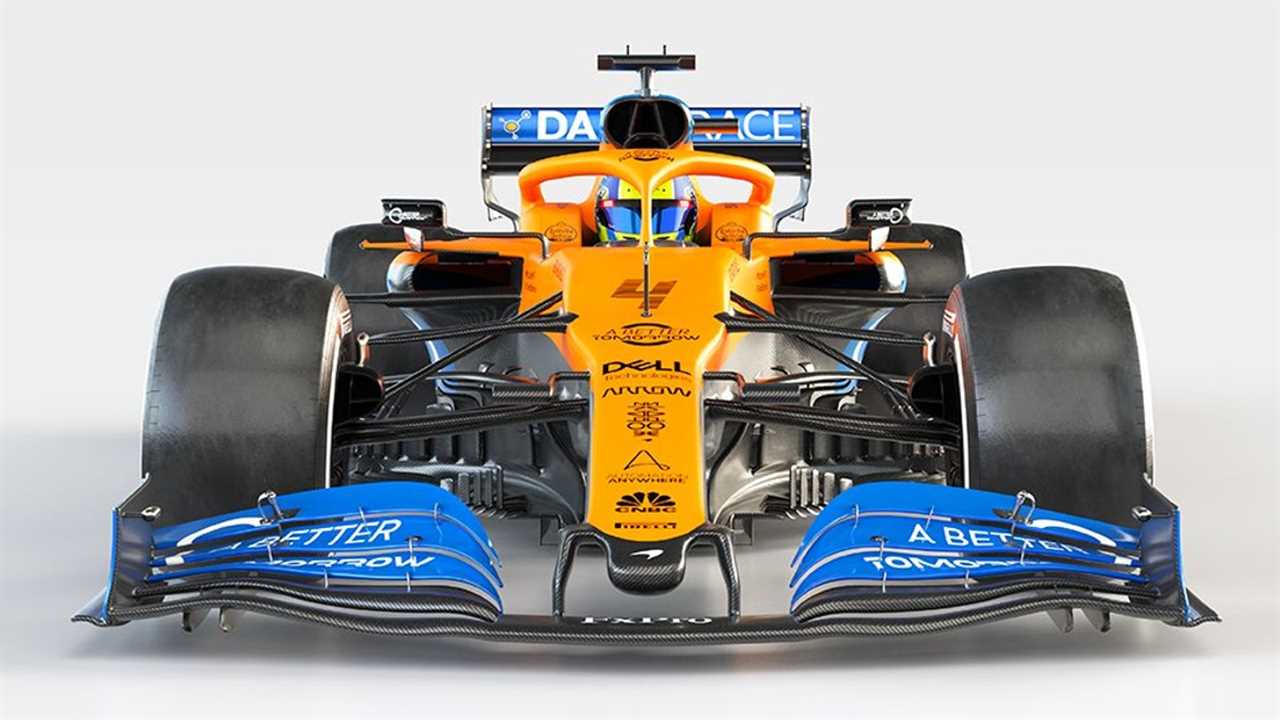
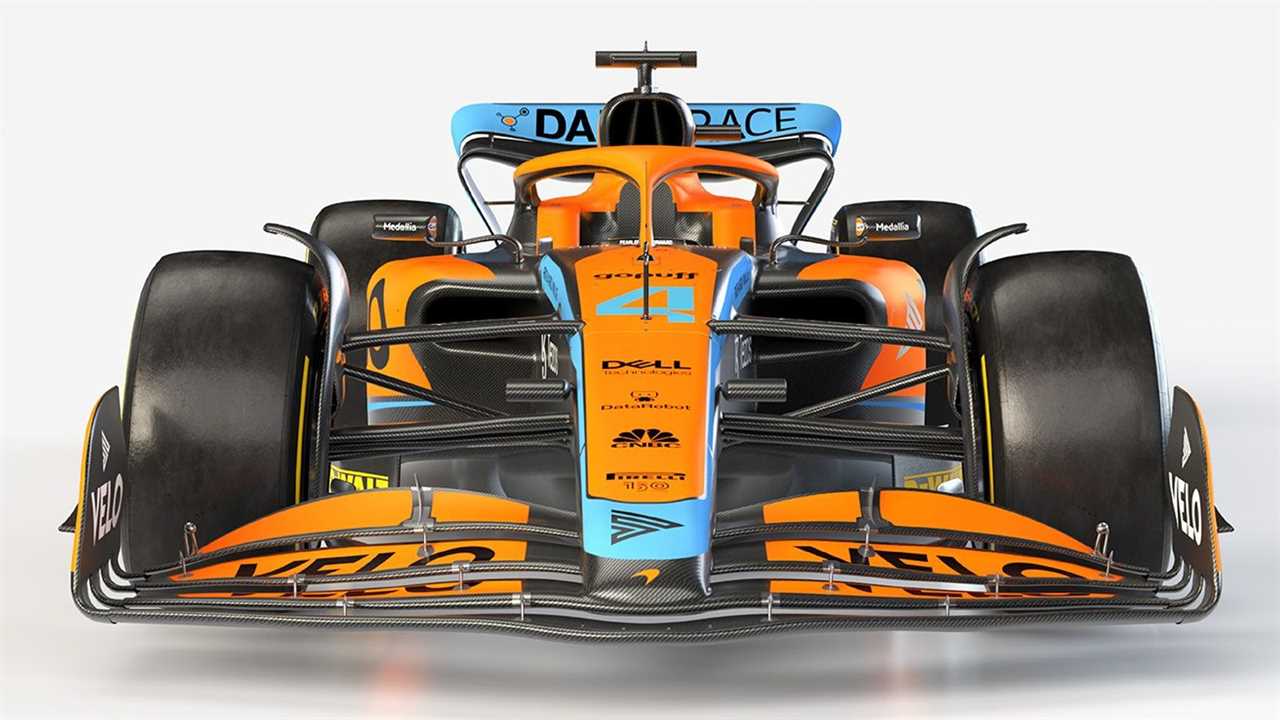
That’s why the 2022 F1 car is getting a whole suite of aerodynamic upgrades aimed at increasing downforce and decreasing aerodynamic wake. The new cars rely more on ground-effect than before, with less of an emphasis on disruptive aerodynamic aids such as wings. This, it is claimed, reduces downforce loss to just 4% at 20m and 18% at 10m.
These changes had all been originally slated for the 2021 season, but were delayed due to the Coronavirus pandemic. Here are a few of the highlights:
1. The front wing and nose have been completely redesigned to reduce the aerodynamic wake thrown out by each car, allowing following cars to get closer without worrying so much about disrupted airflow.
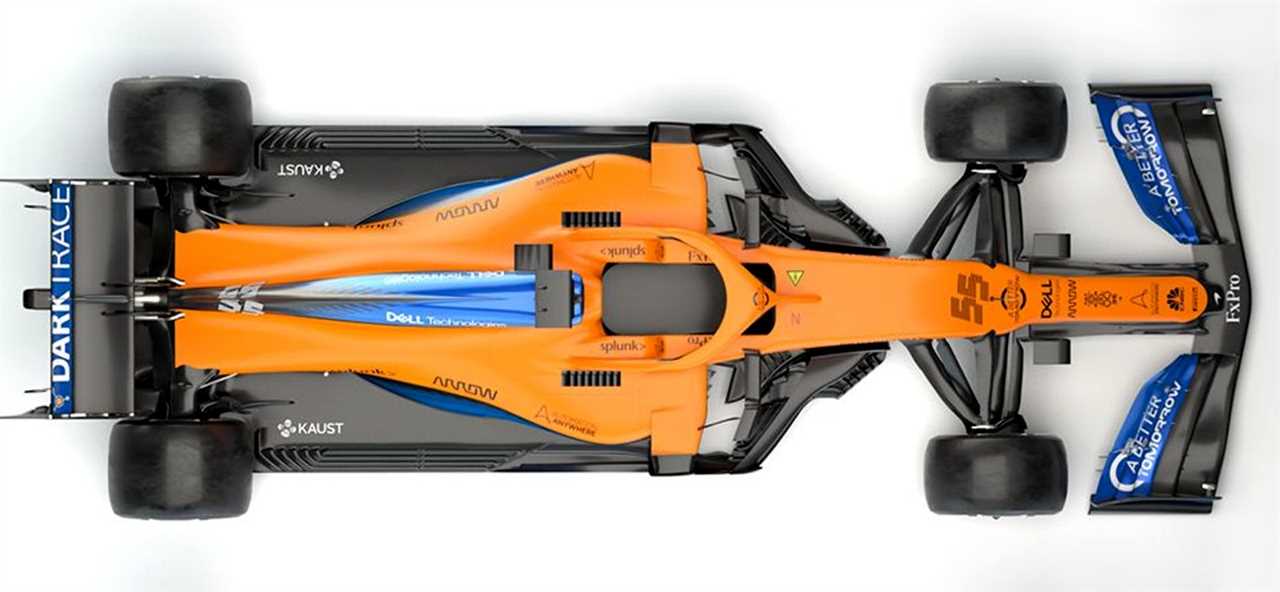
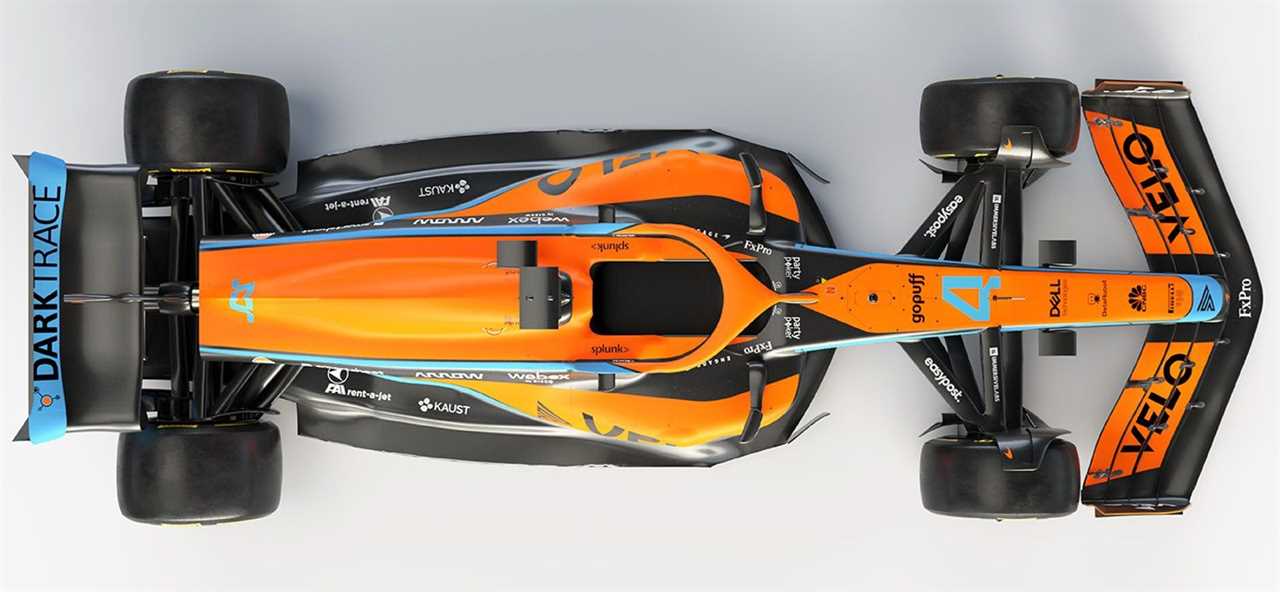
The 1.6-litre turbocharged hybrid engines may be the same (though running on more sustainable E10 fuel), but the c
2. The same has been done with the new winglets set back from the nose, the new 18-inch wheels and the return of wheel covers, all tweaked to keep airflow smooth and tight.
3. New floors featuring fully shaped tunnels have been created to increase ground-effect-related downforce, helping the cars stick more closely to the road, reducing the reliance on the rear wing for downforce.
4. The rear wings gets a more curvaceous, sculpted shape to create a less disruptive mushroom-shaped vortex behind the car. 5. The 1.6-litre turbocharged hybrid engines may be the same (though running on more sustainable E10 fuel), but the changes to the aerodynamic array will, in minimising airflow disruption and increasing downforce, potentially lead to much more exciting on-track action.
Will F1 Sprint Qualifying races return in 2022?
Sprint qualifying races made their debut during the 2021 season and they are, in essence, races that determined the grid position for Sunday’s Grand Prix. At 60 miles long, they are shorter than a normal 190-mile-long Grand Prix race, though the rules are the same.
Are they confirmed for 2022?
Yes, although it was touch and go. In November 2021, F1’s sporting director Ross Brawn said that there would be six sprint qualifying sessions in 2022 and that the first of these would take place at the season opener in Bahrain followed by others at Imola, Montreal, Spielberg, Zandvoort and Sao Paulo.
However, reports suggested some of the top teams were unhappy with the proposal. Although F1 has agreed to pay teams more money to offset the cost of extra racing, it rejected demands from some of the bigger teams to increase the £140 million budget cap as a result.
F1’s owner, Liberty Media put forward a revised proposal for three sprint qualifying races this season as a compromise, and that was approved on February 14 following talks between F1’s governing body the FIA, and all the teams.
The three F1 Sprint races are due to take place at the Emilia Romagnan, Austrian and Brazilian Grands Prix.
How does Sprint Qualifying work?
The starting grid for the Sprint Qualifying race on Saturday is determined on Friday afternoon, after Practice 1, by the usual three-session knockout Qualifying session, whereby the slowest five drivers are eliminated in Q3, followed by five more drivers in Q2, leaving the final ten to battle for pole position in Q3.
With the fastest times all set, the starting grid for the Sprint Qualifying race is determined.
Grid formation and start procedures are identical to the full-length grand prix, though drivers do not have to pit for tyres during the Sprint Qualifying race.
The final result of Sprint Qualifying then determines the starting grid for Sunday’s grand prix.

